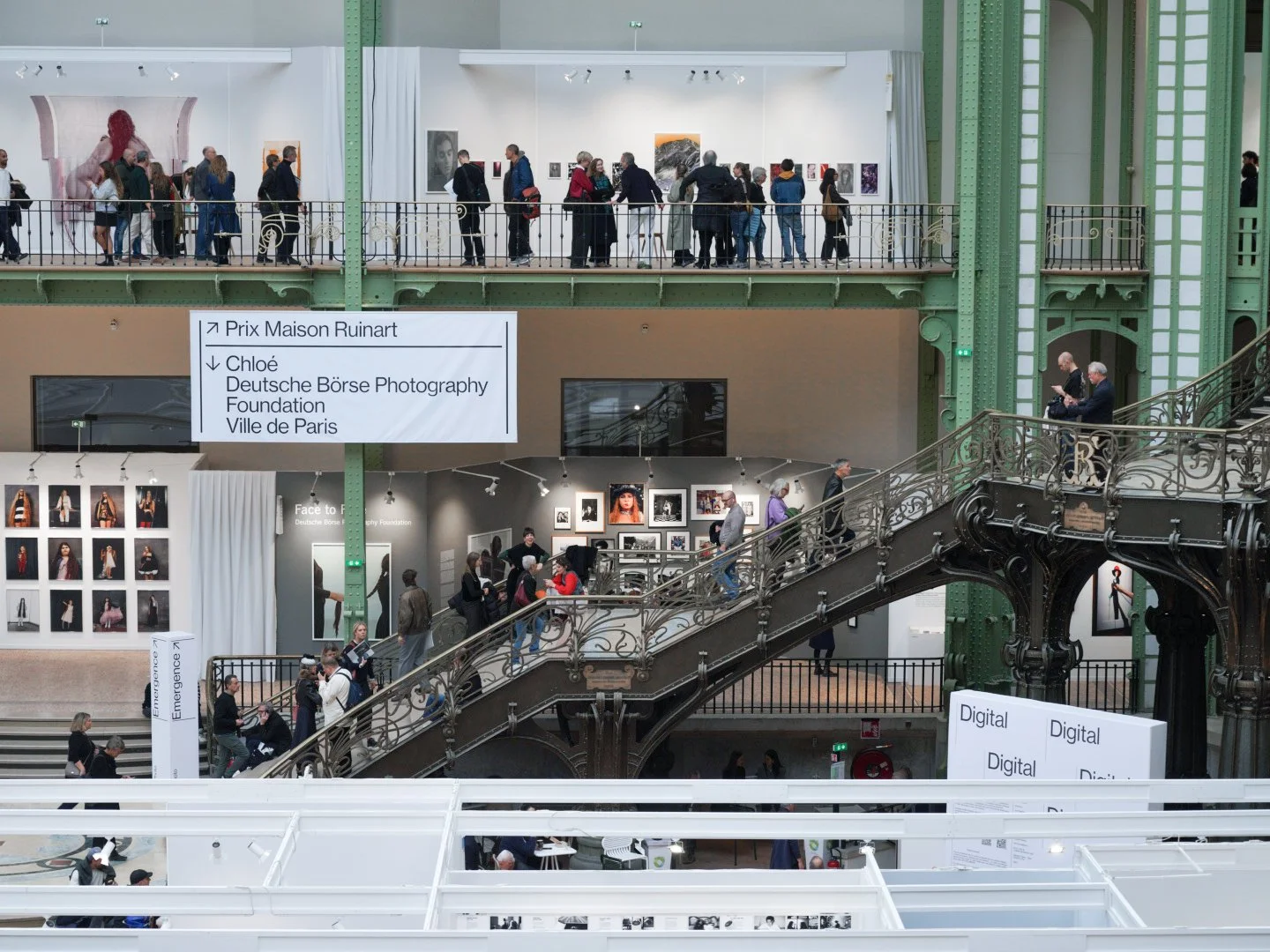Paris Photo 2025: Folds, Fragments and Fierce Futures
At this year’s Paris Photo, 13–16 November, Grand Palais, the lens-based landscape felt electric, more to say alive with artists who bend archives, histories and imaginaries toward new Afropean and global narratives. Among the fair’s quiet triumphs stood Aperture’s Black Chronicles, guided by curator Renée Mussai, whose long-standing commitment to re-inscribing Black presences into European visual history continues to feel both urgent and celebratory. Mussai, born in London to German-Eritrean heritage, has spent two decades reframing photographic canons. Here, her selection pulsated with the dignity and poise of sitters once sidelined, reminding viewers that the archive is never neutral, only waiting to be re-read.
A different form of intimacy unfurled in Bharat Sikka’s Ripples in the Pond, a poetic study of masculinity and distance, sculpted into book form through Hans Gremmen’s razor-sharp graphic conception for Fw:Books. Sikka, an Indian photographer known for his quiet emotional topographies who renders the mundane almost mystical.
Yet the fair’s emotional centre of gravity may well have been Gauri Gill. Her series The Village on the Highway (2021) documents the ephemeral architectures erected by Indian farmers protesting agricultural deregulation. Gill, who has long worked in close collaboration with rural and marginalised communities, photographs not only structures of bamboo and tarpaulin but the resilience they hold. The images speak of defiance as a form of design—improvised, collective, dignified.
Making its debut, the Deutsche Börse Photography Foundation presented an exceptionally strong stand: from Dana Lixenberg and Samuel Fosso to rising forces like Lebohang Kganye, whose layered explorations of memory and myth remain breathtaking, as well as Aida Silvestri, whose courageous visual activism grips like a held breath.
Not least, an unexpected revelation awaited at the Musée du quai Branly – Jacques Chirac, where Hoda Afshar’s installation The Fold unfurled in a vast grid of 900 film prints. Working from digitally cropped fragments of drapery studies, Afshar, an Iranian-Australian artist probing power, bodies and representation prints these chance-born details back into analogue form. The result is hypnotic: an archive fractured, reassembled, and defiantly opaque.
Paris Photo 2025 reminded us that photography is never merely image-making but world-building.





